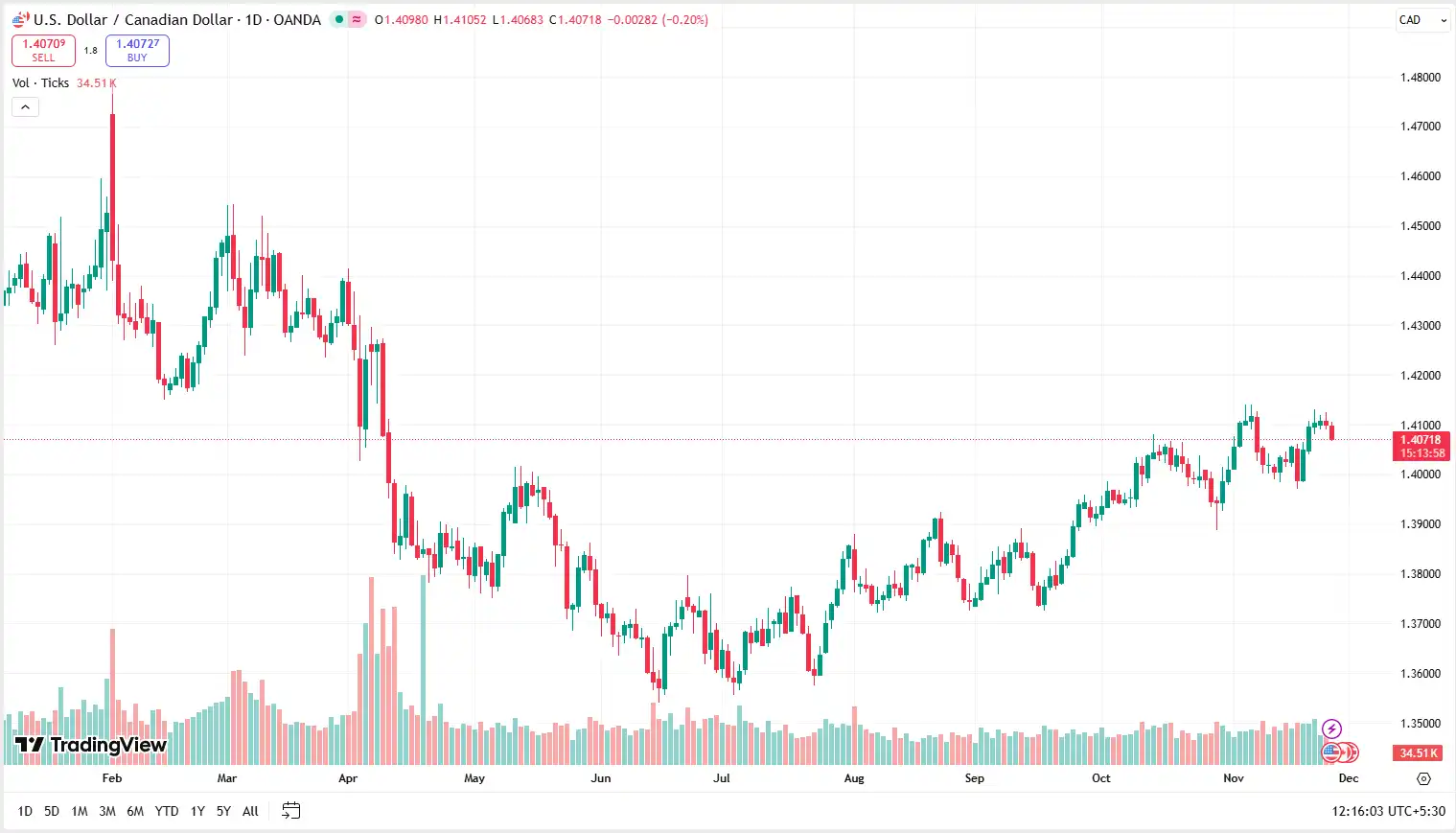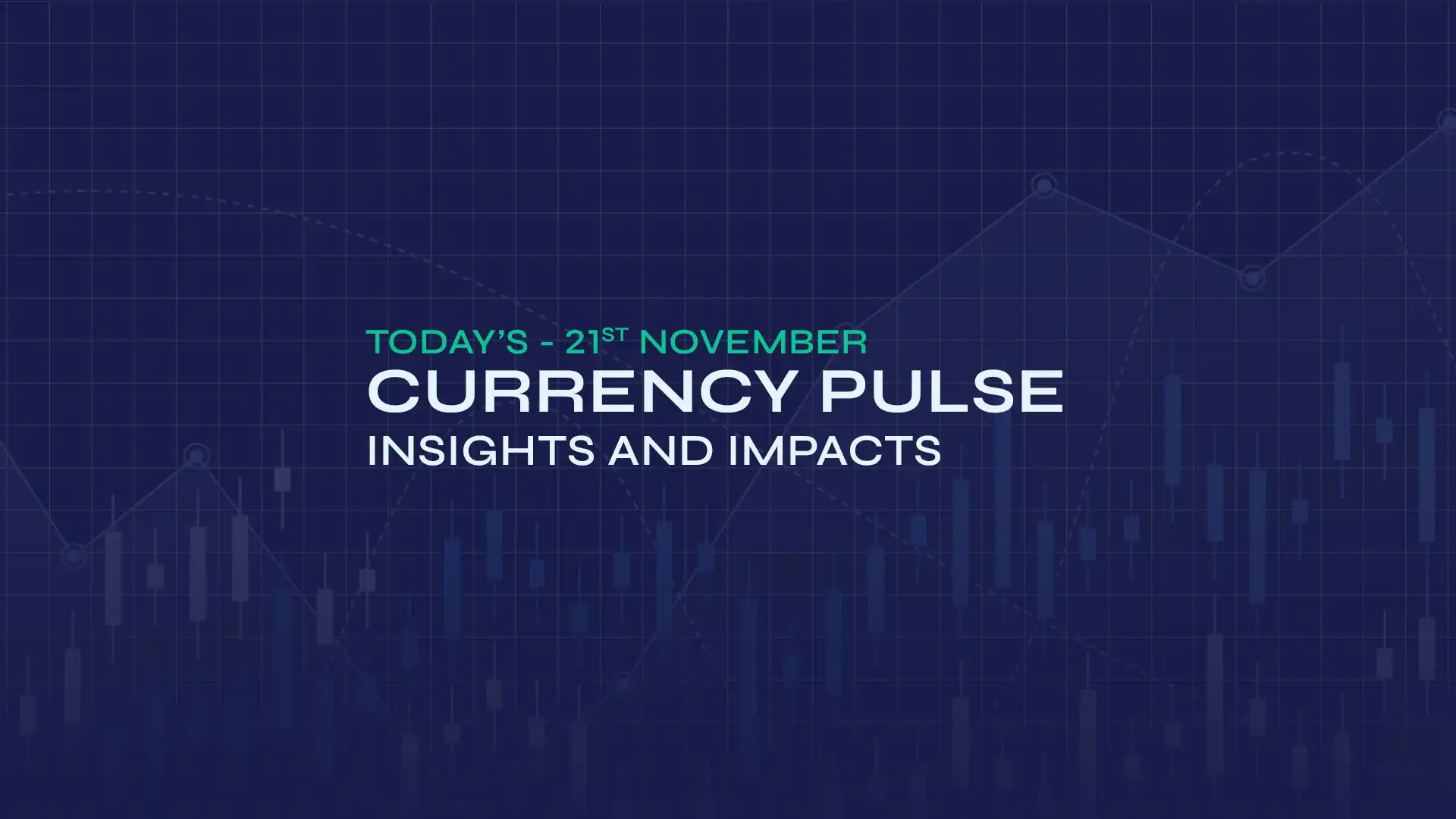GBP/USD traded near 1.3190[1], extending its upward momentum for a fifth consecutive session, in Wednesday's early Asian hours. It is believed that the two still enjoy a softer US dollar[2] climate and a better short-term mood over the pound. Price action reveals buyers insisting on keeping the support above the 1.3150 mark and a revisit to the 1.3230 resistance[3] mark will occur in case the bullish currents continue to hold. Nevertheless, intra-day volatility could increase before important policy and data risk on either side of the Atlantic.
Market reports[4] note that the pound is in the short term focused on the UK Autumn Budget, in which the Chancellor Rachel Reeves is strongly anticipated to announce bulky tax hikes as an attempt to stabilise the awareness of the populace. A cautious fiscal policy could offer small support to UK assets by enhancing long-term credibility, but any policies seen to be growth-restrictive would dampen medium-term GBP enthusiasm. The background of declining domestic inflation, which is at present at 3.6% in October, has further contributed to the prospects of a Bank of England (BoE)[5] cut in its rates in December, which provides an added caution to the optimistic traders.
Market commentators[6] note that both have been supported by renewed US-dollar weakness. A run of softer US data has intensified expectations for a Federal Reserve (Fed) rate cut next month. According to the CME FedWatch Tool[7], the markets now price in more than 84% of a reduction of 25 bps, which as compared to a week ago is sharp. This repricing has forced US Treasury yields down, decreasing demand on the US dollar and helping the pair gain further.
Analysts[8] point out that focus is now on the upcoming US data releases such as the labour-market data and revised GDP figures which will show whether the current spurt of weaker data persists. Any additional US slowing of economic grounds might prolong GBP/USD support in the short run, although the short-term threats are biased toward continued down-side in case the expectation of BoE rate-cuts intensifies. The GBP/USD exchange rate has extended its upward momentum, supported by a softer US dollar and optimism around the pound, though caution remains amid expectations for both Fed and BoE rate cuts.

EUR/USD Extends Gains as Dollar Weakens Broadly
EUR/USD traded near 1.1590[9], extending its upward momentum in Wednesday’s Asian session, as sustained US dollar weakness underpins the pair. The recent improvement is believed to be a third consecutive day of improvements and price action has been backed up by weaker US economic indicators that have strengthened the expectation of a December Fed cut[10] to the rate. This change in interest rate picture has reduced the demand of the greenback and enabled the euro to strengthen moderately enabling the two to remain safely above the short term support zones.
Market reports[11] indicate that market repricing has been accelerating since a span of weaker US data releases. The CME FedWatch[12] Tool has indicated that the traders are now putting over 84% chances of a 25 basis point rate cut in December as opposed to a 50% probability a week ago. The September US Retail Sales[13] dipped to 0.2% MoM, indicating a more risk-averse consumer environment, and the Control Group was surprisingly shrinking. Combined with a sharp decline in Consumer Confidence to 88.7, these data arrangements cooled economic momentum, overloading the US dollar[14] sentiments.
Market commentators[15] observe that the dollar has also not been spared by the inflation indicators. US PPI[16] was held at 2.7% YoY in September with core producer inflation being recorded at 2.6%, lower than the expectations. As inflation stabilised and growth pointers declined, the near-term bias is slanted against the greenback. Economic slowdown will be confirmed by future US figures especially jobless claims[17] and ISM figures and this may spread downward pressure on the US dollar.
Analysts[18] indicate that the European Central Bank (ECB) policy makers in the Eurozone still focus on data dependency as rate is expected not to increase until 2026. Economic results of the Eurozone[19] and the monitoring of the inflation in the services sector provide fair support to the currency. Although the short-term picture continues to support EUR/USD, there is a medium-term risk, and the global growth will weaken further or the data in the US will stabilise, which will moderate the upward trend of the pair. The EUR/USD exchange rate has been supported by weaker US data and rising expectations for a December Fed rate cut, enabling the pair to extend its upward momentum and remain above short-term support levels.

USD/CAD Dips Amid Rising Fed Dovishness
The USD/CAD pair traded near 1.4080[20], edging 0.12% lower in Wednesday's Asian session, with the loonie gaining modest support as the US dollar softened amid firm expectations of a Fed rate cut in December. The price action is believed to be an indication of a slight deposition of long US dollar positions following the US Dollar Index (DXY)[21] continuing its drop on Tuesday, and now trading around 99.70. This conservative approach to the greenback has continued to hold the duo in check, below the recent highs, but the larger uptrend is there intact so far.
Market commentators[22] note that sentiment has shifted decisively towards a dovish Fed policy. The CME FedWatch tool now indicates an 85.3% probability of a 25-basis-point cut at next month’s meeting, up sharply from 50.1% just a week earlier. New York Fed President, John Williams[23], furthered this perception by stating that monetary policy has been slightly tight and can be adjusted further in the near future. This, together with the declining momentum of the US economy, has put pressure on the US dollar and dampened the potential of the pair upside.
Recent market reports[24] indicate that slowing core producer inflation and only modest growth in September retail sales have added further pressure to the greenback. These data points reinforce signs of a cooling US economic environment. The US releases in the coming days such as the jobless claims[25], PMIs and consumer expectations of inflation may contribute to the slight softness in the near term in case they confirm that the demand conditions are deteriorating. This may continue to hold USD/CAD at the defensive side especially in case Treasury yields continue to go down.
Analysts indicate that in the case of the Canadian dollar, anticipation that the Bank of Canada (BoC)[26] will maintain rates held after indicating that it is about to terminate its easing cycle brings short-term stability. Nonetheless, there are still medium-term risks as other analysts predict even more reduction in the rate in 2026[27] in case growth and inflation abate. This divergence sees the two held on dips, despite the short term US dollar weakness that cools off the bullish momentum. The USD/CAD exchange rate remains under pressure as dovish Fed expectations and US dollar weakness support the Canadian dollar, keeping the pair below recent highs but within an intact broader uptrend.

NZD/USD Gains as Policy Shifts Shape Sentiment
The NZD/USD pair edged higher trading near 0.5680[28] in Wednesday's early Asian trade, supported by a firmer New Zealand dollar following the Reserve Bank of New Zealand’s (RBNZ) latest policy announcement. The price move is believed to have been a preliminary bullish response to the central bank announcing the long-awaited 25-basis-point cut in the Official Cash Rate to 2.25%[29]. The domestic conditions, such as a stagnant growth momentum and declining housing market, were noted by RBNZ[30], but the tone of the announcement was not blatantly dovish. This stabilised the kiwi following recent losses, with the traders awaiting further clarifications following the press conference with the Governor at 02:00 GMT.
Market reports[31] point out that the mood on the pair remains influenced by opposing economic indicators in the United States. The weaker than expected US data on Tuesday took a toll on the greenback, and the duo could continue its gains since the lows of the month. US retail sales rose only 0.2%[32] month-on-month in September, lower than the market expectancy, and ADP data indicated that the private employers had eliminated an average of 13,500 jobs in the four weeks to 8 November. The readings supported fears of a decelerating labour market in the US and reiterated expectations of a Fed rate cut in December.
Market commentators[33] note that the market pricing is currently at 85% chance of a 25 basis point Fed cut, compared to 80% earlier in the week. This has reduced the upward movement of the dollar and given NZD/USD short-run support. Nevertheless, the rebound of the pair may be sustainable as future US indicators will tell whether the economy will lose momentum.
Analysts suggest the focus will shift to US Durable Goods Orders[34], First Jobless Claims, Chicago PMI and the next Fed Beige Book. Better-than-expected results may moderate the expectations of Fed ease[35], and rekindle the dollar demand, and serve as a headwind to the pair. As the pair is taking a short-term ride, the medium-term risks are skewed towards the negative side in case US data catches the market off their feet or the domestic situation in New Zealand deteriorates further. The NZD/USD exchange rate edged higher amid supportive central bank action and weaker US data, but remains vulnerable to shifts in Fed expectations and domestic economic risks.

Stay Ahead in the Currency Game
Whether you're a daily FX trader or handle international transactions regularly, our 'Currency Pulse' newsletter delivers the news you need to make more informed decisions. Receive concise updates and in-depth insights directly in your LinkedIn feed.
Subscribe to 'Currency Pulse' now and never miss a beat in the currency markets!
Ready to act on today’s insights? Get a free quote or give us a call on: +44 (0)20 7740 0000 to connect with a dedicated portfolio manager for tailored support.
Important Disclaimer: This blog is for informational purposes only and should not be considered financial advice. Currency Solutions does not take into account the investment objectives, financial situation, or specific needs of any individual readers. We do not endorse or recommend any specific financial strategies, products, or services mentioned in this content. All information is provided “as is” without any representations or warranties, express or implied, regarding its accuracy, completeness, or timeliness.




